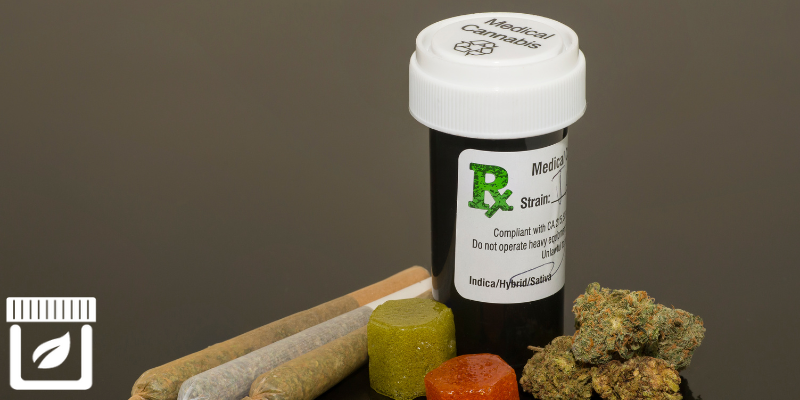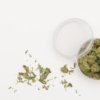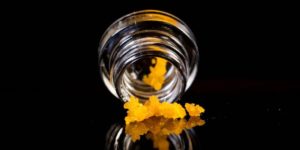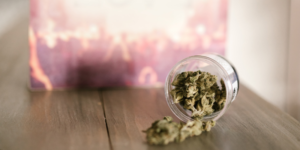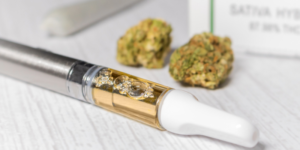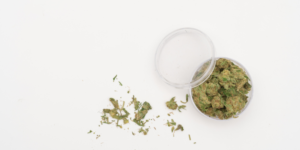How To Read Cannabis Labels
How To Read Cannabis Labels
With more and more states legalizing cannabis, there’s never been a better time to purchase cannabis products. Legal dispensaries provide quality control guarantees, ensuring each product is safe for personal use.
Cannabis products come in many varieties. Between THC and CBD concentrates, capsules, edibles, and cannabis flowers, there’s something for everyone to enjoy. These products feature informative labels designed to help consumers understand what type of cannabis they are purchasing.
Cannabis labels include details regarding product type, quantity, potency, and dosage amounts. And yet, understanding how to read these labels can be easier said than done. New and experienced smokers may struggle to make sense of this information.
In this guide, you’ll learn how to read cannabis product labels, helping you choose the right type of cannabis for your needs. Whether you’re an experienced smoker or eager to try cannabis for the first time, we’ve got you covered.
Step 1: Check the Product Name
Weed labels contain a lot of information. It can be hard to wrap your head around everything. Start by looking for the product name, which should be in large, easy-to-read text.
The product name indicates the cannabis strain you are purchasing. It may also tell you what kind of flavor or experience you can expect. The product name is important to keep track of, as you may want to purchase more of a certain item in the future.
The product name also tells you which type of cannabis species the product contains. Usually, cannabis products use Indica, Sativa, or a mix of these two. Indica strains tend to be more relaxing, while Sativa gives you more energy.
There are countless strains and cannabis product for you to consider, each offering a unique experience.
Step 2: Determine the Type and Weight
Cannabis product comes in many different types, each with unique benefits. Type refers to the specific form the product comes in.
Edibles, for instance, are food items like cookies, brownies, and gummies that include some type of cannabis product. They’re convenient and easy to use for newbies and aficionados alike. Edible cannabis products come packaged with information informing you about what to expect.
Cannabis vape products involve inhaling concentrated THC or CBD through an electronic vape. Tinctures, flowers, and extracts are other common types of cannabis you can purchase at a dispensary.
A cannabis product label will state the type of cannabis in a clear and visible location. You can usually tell where it is by looking near the product name. Other times, the name itself includes information regarding the type.
While cannabis product comes in various weights, a product’s whole weight matters less than the concentration of THC or CBD it contains. Usually, labels list the mass or concentration in grams, ounces, or pounds.
Step 3: Potency Analysis
Cannabis labels display a potency analysis portion with a cannabinoid profile or information on the percentage of each active cannabis ingredient within the product.
This profile uses a Total Active Cannabinoids (TAC) rating. The TAC rating is vital information, part of the cannabinoid profile you cannot miss. The TAC rating provides critical information about how each active cannabinoid interacts with one another.
Cannabinoids come in two main varieties: THC and CBD. CBD provides a relaxing feeling, while a product with a high THC content will be rather intoxicating. THC creates the “high” that many cannabis smokers love.
THC levels vary depending on the type of product. Edibles typically consist of 5-30% THC per product, while tincture products are usually below that 5% threshold. Extracts, vapes, and concentrates contain higher potency levels, usually within the 40-80% range.
Labels may indicate other active cannabinoids besides THC or CBD, such as CBG, CBN, and THCA. THCA is a variant of THC that only becomes intoxicating after repeated heat exposure. Sometimes, labels feature both THCA and THC ratings that contradict one another, such as a THC rating of .08% and a THCA score of 20%; in those cases, pay more attention to the THCA rating, as it is the de facto THC rating.
The potency analysis portion of a label may also feature a THC-to-CBD ratio. This ratio typically is 3:1 or 5:1. Products that combine THC and CBD feature this information to inform consumers about what type of experience they can expect.
Step 4: Dosage
Cannabis packaging is legally required to feature information regarding the recommended dosage. Typically, this amount appears on the label but may reside on the packaging. Dosage varies depending on numerous factors, such as the TAC rating and product type.
Manufacturers recommend a certain dosage based on their in-house testing procedures. While you can use more or less of a product in a given setting, it is best to follow their advice, especially if you are a new user.
Step 5: Date Information
State regulations often mandate that cannabis product labels feature important dates related to manufacturing and storage. Even in places where this measure isn’t mandatory, most products will feature date information, such as the package date.
Much like any food item, the expiration date indicates when a certain product will lose its desired effect and potency. Meanwhile, the harvest date indicates when the manufacturers removed the marijuana flower used in the product.
The test date might not seem that important. However, it provides a quality guarantee. The test date proves that the manufacturer did their due diligence and tested the batch before packaging it for sale.
All of these dates serve an important purpose. They let you know more about your product and whether or not it is fresh and potent.
Step 6: Terpene Analysis
Many cannabis enthusiasts aren’t sure what terpenes are. Terpenes are organic compounds. These compounds play a key role as manufacturers frequently adjust and adapt them to provide custom and unique experiences.
Terpenes give food products their unique flavor. When it comes to cannabis plants, terpenes act in much the same way; different terpene levels affect the consistency and taste of different cannabis items.
Many cannabis labels include terpene percentage counts to help consumers learn more about a product. Terpenes don’t contribute to the high you enjoy when you smoke, but they affect the smell and even the pain relief levels you may experience after smoking.
Step 7: Other Information
Usually, cannabis products feature information besides the listed details. This information varies from product to product. Here are some other pieces of information you may want to watch out for.
Warning Labels
Some states require mandatory warning labels on cannabis products. These labels caution users to keep the product away from children and pregnant women. They also warn against operating vehicles or machinery while under the influence.
Storage Information
Products may provide simple yet informative details regarding best practices for storing cannabis items. Different types and strains of cannabis require different storage practices. For instance, some edible items require a refrigerator to retain their potency, while others might pair well with a dispensary bag.
Manufacturer Information
Manufacturers may include promotional information about their company on a product’s label or packaging. However, more importantly, they should list their contact information and their legal permit number.
Batch Number
Batch numbers let dispensaries track production trends and patterns, helping with quality control.
Testing Lab
Don’t kid yourself: Testing lab information is one of the most important details you should look for on a product label. The testing lab guarantees premium quality and safety. Avoid products without proper testing information.
Specific Types of Labels
Cannabis label information tends to be similar from type to type. However, even if the information itself might be similar, the way manufacturers present it could differ. Below is crucial information about different cannabis products and the details you can expect to see on their packaging.
Edibles
Edibles are unique among cannabis products. Technically, they count as cannabis and food products. Packaging for edibles, therefore, can read like a normal food item.
Some states require specific information on such packaging. Labels for edibles may or may not include the following details:
- Net volume/weight
- Batch number
- Expiration, use-by, and best-by dates
- Cooking instructions
- Ingredient information
- Manufacturer details
- Government warning
- TAC rating (THC and CBD content information)
- Product name
While the above information is important, the THC and CBD content details matter most, so get in the habit of looking at them first. You’ll want to know how many milligrams of THC or CBD each product contains.
Keep in mind that packaging information might list the THC or CBD amount for the entire package. In that case, you must divide that figure by the number of servings per package. For instance, if a package of THC-infused brownies has a total THC rating of 50mg, and there are five brownies in the package, then each brownie will have 10mg of THC.
Tinctures
Although tincture products are not technically food items, they usually include nutrition information all the same. As with edibles, the most important detail you’ll want to look out for is the THC and CBD count in milligrams.
Topicals
Topical cannabis products, above all else, instruct users never to consume them orally. Their labels usually list all active ingredients, including THC and CBD. Topical products sometimes include additional ingredients for cosmetic effects.
Flowers
Cannabis flower products use a dried marijuana flower containing a specific amount of THC. Flower labels include a detailed potency analysis section; usually, they feature a THC level of 1-30%.
Keep in mind that this percentage corresponds to the flower’s weight in grams. A flower containing 25% THC will feature 250mg of THC per gram. As important as the THC count is, remember that other factors, such as terpenes, impact the quality of your experience.
CBD Items
CBD products have gained immense popularity in recent years for their sedative, calming effect. Federal regulations mandate that legal CBD items contain no more than 0.3% of THC. In addition to displaying the THC percentage count, CBD labels will indicate one of three varieties: full-spectrum, broad-spectrum, or isolate.
Full-spectrum products consist of many different cannabinoids besides CBD, including a small amount of THC. Broad-spectrum items use many cannabinoids but exclude THC. Finally, isolates contain CBD and nothing more.
Concentrates
THC concentrates provide a uniquely pure experience. These products’ labels include the same information as other items, yet with a catch. Keep a close eye on the listed THC count; it should be above 50% to guarantee an authentic concentrate.
Label Accuracy
Unfortunately, many cannabis labels feature inaccurate or misleading information. Products from random or unauthorized sellers may be deceiving. For instance, some THC concentrate products deliberately lie about the THC count, giving you a subpar experience at an unfair price.
The recent push to decriminalize and legalize cannabis products has empowered legal, authentic dispensaries. Dispensaries follow specific regulations to ensure accurate, honest labels.
Also Read: Storage Options For Weed
Contact 420 Stock for Quality Cannabis Products
Now that you can read cannabis labels, you’re probably eager to enjoy a fun and relaxing smoking experience. You deserve nothing less than the highest-quality cannabis products at reasonable prices. Whether you are new at this or are a seasoned cannabis enthusiast, 420 Stock is your go-to store for all types of cannabis products, so be sure to check out our full inventory.
We also sell premium-grade Mylar bags that are perfect for storing your products. Contact us at (844) 420-7862 or visit our online store today.

